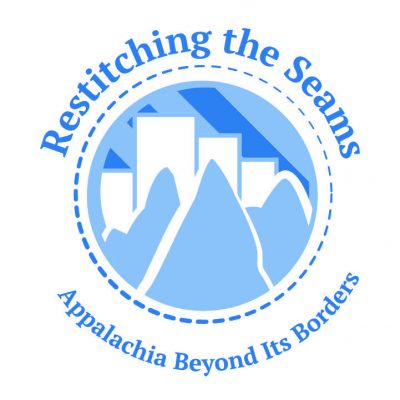Participation Type
Panel
Session Title
Contemporary Rhetoric in Appalachian Literature
Session Abstract or Summary
This session will address a variety of issues stemming from the rhetoric (both written and visual) used either by Appalachian authors or in other representations of the region, as depicted in graphic novels and travel writing. These contemporary representations affect how audiences of these rhetorics view the region, its industry, and its sociological issues. Our focus on the visual rhetoric to portray Appalachia (specifically in Robert Gipe’s Trampoline and Emil Ferris’ My Favorite Thing Is Monsters) expands on the definition of Appalachian literature as written and historical in period.
Through combining these primary source texts with critical theory, such as ecocriticism and ecofeminism, as well as examining the histories of both the primary sources and the region, myriad intersections come to light that tell us about our own region, how it’s being represented outside of the region, and how these differences can be reconciled.
"Even eco-tourism has its limits": The Rhetoric of Disgust in International Travel Writing about Appalachia
Presentation #1 Abstract or Summary
My paper explores the rhetorical strategies and argumentative structures employed by international travel writers in newspaper articles and blog posts about the burgeoning eco-tourism industry in Appalachia. I identify a pattern of critical skepticism about the enterprise of eco-tourism inflected by concomitant stereotypes of Appalachia, the South, and the United States. By examining international travel writing, I am able to position reactions to Appalachian eco-tourism enterprises outside American travel writers’ assumptions about the region but within a comparative context of "third world" tourism development.
At-A-Glance Bio- Presenter #1
Katherine Ledford is Associate Professor of Appalachian Studies at Appalachian State University in Boone, North Carolina. From 2009 to 2016 she served as program director, advising and mentoring both graduate and undergraduate students in Appalachian studies. Ledford teaches Appalachian literature and graduate seminars on comparative mountain studies and pedagogy.
Presentation #2 Title
Robert Gipe’s Trampoline and Appalachian Ecofeminism
Presentation #2 Abstract or Summary
In Robert Gipe’s Trampoline, his portrayal of women residing in Appalachia and the challenges they face creates a demographic begging to be examined and understood by theories that have often excluded Appalachian women. By using the ecofeminist research of Greta Gaard, Ariel Sallah, and Carol J. Adams combined with Appalachian Women’s Studies scholarship, chiefly conducted by Elizabeth Engelhardt, and additional sociological studies of women in the region, we begin to uncover the ways in which Gipe uses Trampoline as a way to express the connection between his fiction female characters and real-life Appalachian women. Issues of intimate partner violence, intersections of systems of oppression, social control, self-harm, and addiction are examined through an ecofeminist Appalachian lens in order for us to better understand the ways fiction mirrors reality in Gipe’s work.
At-A-Glance Bio- Presenter #2
Jessica Cory is a lecturer in the English Dept. at Western Carolina University. Currently she is editing and co-editing two collections, one of Appalachian Ecocriticism (with Dr. Laura Wright) and the other comprised of Appalachian Nature Writing, both currently under review with West Virginia University Press.
Presentation #3 Title
Graphic Appalachia: Appalachian Identity Transformed
Presentation #3 Abstract or Summary
The impact of graphic literature, such as Gipe’s Trampoline, or Emil Ferris’ My Favorite Thing Is Monsters, reminds us that illustrated novels have precursors, a history that forms one piece of the story of Appalachia. Graphic art helps to carry the narrative by “stitching the seams” of art and authorship, reaching across those borders to transform the written word into a visual manifestation of Appalachia and identity. The images portrayed in graphic literature were constructed, imagined, and interpret Appalachia and Appalachians to the present day. More evocative than words, the power of graphic novels today and the image laden literature of yesterday becomes part of the Appalachian narrative.
This proposal will address the long history of art and image used to create representations of “Graphic Appalachia,” and its importance to the literature of Appalachia today, based upon research with primary sources from WVU’s Appalachian Collection, the West Virginia and Regional History Center, and Berea College.
At-A-Glance Bio- Presenter #3
A native of Abingdon, Virginia, Stewart Plein is the Rare Book Librarian and Assistant Curator of West Virginia Books and Printed Resources at West Virginia University. She received her BA from Emory & Henry College and her MLIS from the University of South Carolina. Stewart’s research and publishing interests include book history, bookbinding design and Appalachian Studies with a focus on Appalachian local color literature.
"Even eco-tourism has its limits": The Rhetoric of Disgust in International Travel Writing about Appalachia
My paper explores the rhetorical strategies and argumentative structures employed by international travel writers in newspaper articles and blog posts about the burgeoning eco-tourism industry in Appalachia. I identify a pattern of critical skepticism about the enterprise of eco-tourism inflected by concomitant stereotypes of Appalachia, the South, and the United States. By examining international travel writing, I am able to position reactions to Appalachian eco-tourism enterprises outside American travel writers’ assumptions about the region but within a comparative context of "third world" tourism development.

